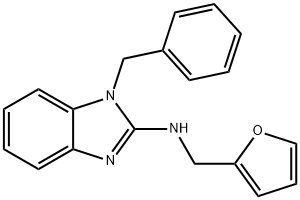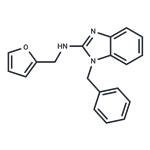AC1903 is an inhibitor of transient receptor potential canonical channel 5 (TRPC5; IC50 = 14.7 μM). It is selective for TRPC5 over TRPC4 and TRPC6 at concentrations up to 100 and 30 μM, respectively. It inhibits TRPC5 in a concentration-dependent manner in HEK293 cells when used at concentrations ranging from 1 to 100 μM. AC1903 (30 μM) inhibits angiotensin II-induced production of reactive oxygen species (ROS) in wild-type podocytes and podocytes expressing a mutant angiotensin II type 1 (AT1) receptor that cannot be inactivated and endocytosed. It also suppresses proteinuria as well as reduces pseudocyst formation and podocyte loss in an AT1 receptor transgenic rat model of kidney disease when administered at a dose of 50 mg/kg twice per day. In a model of hypertension-induced focal segmental glomerulosclerosis (FSGS) using Dahl salt-sensitive rats, AC1903 decreases the rate of proteinuria when administered at the beginning of a high-salt diet and prevents progression when administered one week following initiation of a high-salt diet.
AC1903 is a TRPC5 inhibitor with valuable potential for the treatment of progressive kidney diseases. AC1903 inhibits TRPC5 ion channels and suppresses progressive kidney diseases via TRPC5-AT1R related genetic pathways. ?AC1903 also provides therapeutic benefit in a rat model of hypertensive proteinuric kidney disease.
1) Zhou?et al.?(2017),?A small-molecule inhibitor of TRPC5 ion channels suppresses progressive kidney disease in animal models; Science,?358?1332

